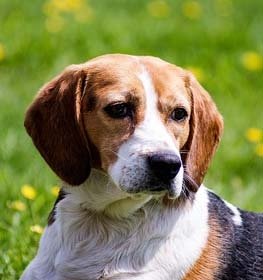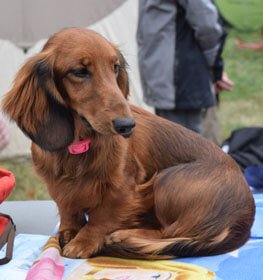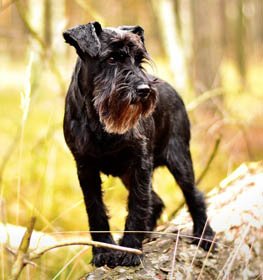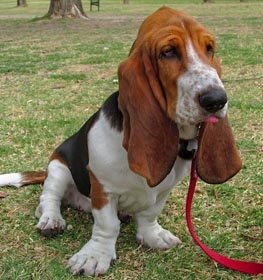Plott Hound Information & Dog Breed Facts
Collection of all the general dog breed info about Plott Hound so you can get to know the breed more.
| Group | Hunting Dogs |
|---|---|
| Popularity Rank | 166 |
| Reviews | 1 |
| User Ratings | |
|
Compare the Plott Hound With Other Dogs
Select at least one dog breed to make the comparsion. | |
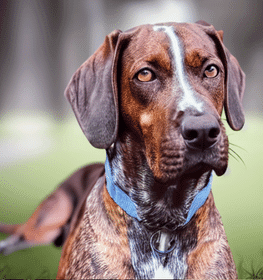 | |
| Origin | |
|
Common Names & Aliases
What other names is a Plott Hound known by? Discover all traditional, regional and informal names used for this breed. | PlottPlotthund |
|---|---|
|
Breed Classification
What type of dog breed is a Plott Hound? Learn about its genetic classification and breeding category. | Purebred |
|
Size Classification
What size category is a Plott Hound? Learn how big the Plott Hound breed typically grows. | Medium |
|---|---|
|
Weight Statistics
How much does a Plott Hound weigh? Discover typical weight ranges for adult males and females of the Plott Hound breed. | 40-75 pounds (18-34 kg) |
|
Average Weight
What is the average weight of a Plott Hound? | 57.5 pounds (26 kg) |
|
Height
How tall is the Plott Hound? Plott Hound height: | 20-25 inches (51-63 cm) |
|
Average Height
What is the average height of a Plott Hound? | Male: 23 inches (58,5 cm), Female: 22 inches (56 cm) |
|
Price Range
How much does a Plott Hound puppy cost? Find current market prices and factors affecting Plott Hound costs. | $300-$500 If you choose to purchase the Plott Hound, you should know that the mentioned amount of money is an average of the collected data from breeders’ sites and puppy finder places. If you have a Plott Hound for sale, please advertise it on a reliable website to make sure the Plott Hound gets to a happy place. |
|---|---|
|
Availability
How easy is it to get a Plott Hound? How many Plott Hound are there in the world? | Frequent: The Plott Hound is easier than average to get. Maybe there is some risk of overbreeding, as it is a popular breed. Due to its popularity, inbreeding may occur. A new study shows that inbreeding contributes to the incidence of disease and health problems. So be careful and seek the help of an experienced person or a professional, in making your decision. |
|
Intelligence Rating
How intelligent is a Plott Hound? Discover the Plott Hound's intelligence ranking and learning capabilities. | Low to average: This canine intelligence is not the brightest one. Keep in mind that if you want to teach them any tricks, they understand and memorize new commands in 40-80 repetitions. Plott Hound obey the first command 30% of the time or better. So if you want to have a smart dog, you might have to reconsider your choice with this breed.
The Plott Hound ranks below average in the intelligence ranking of dogs. |
|---|---|
|
Training Difficulty
How easy is it to train a Plott Hound? Learn about the Plott Hound's trainability and response to training methods. | Plott Hound dogs are easy to train. They find out the association between commands and actions quite quickly. |
|
Watchdog Rating
How good is a Plott Hound as a watchdog? Learn about the Plott Hound's alertness and guarding instincts. | Plott Hound dogs are average watchdogs. If they sense something different, they will alert you, but observation isn't considered their main job.
|
|
Territorial Protection
Is a Plott Hound protective of its territory? Learn about the Plott Hound's guarding instincts and behavior. | Plott Hound dogs are extremely protective guard dogs. This breed doesn't hesitate to protect its territory so the Plott Hound can be a good choice if you want an excellent guard dog. Keep calm and the Plott Hound will take care of unwanted people or animals. |
|
Personality Traits
What personality does a Plott Hound have? Learn about characteristic Plott Hound temperament and behavior traits. | AlertCourageousLoyalBold |
|---|---|
|
Sensitivity Level
How sensitive are they? Plott Hound sensitivity: | They are a little bit more sensitive than other dog breeds. Soft punishment affects them emotionally. Plott Hound dogs don't tolerate irregular daily routines, noisy households, and frequent guest visits really well.
They are receptive to their owner's emotions and make wonderful family companions. |
|
Affection Level
How affectionate are they? Is a Plott Hound a good family dog? | Average: Plott Hound dogs are average dogs regarding their affection level. Some breeds are forthcoming and friendly, while others are independent and don't bond too closely with their owners. |
|
Social Needs
How much social interaction does the Plott need? Plott Hound social needs: | Plott Hound dogs need for social interaction is average. This breed likes being around people or other animals, but they don't mind being left alone for a few hours either. |
|
Impulse to Wander or Roam
How likely is the Plott Hound to run away? Does this breed explore or wander a lot? Does Plott Hound roam? | Plott Hound dogs have high wanderlust potential, which means that this breed has a strong desire for exploring the world. Safer to walk them on a leash unless you teach them how to get back to you on command. This breed is also able to cause damage to your fence. |
|
Prey Drive
Do this canine have a strong prey drive? Does Plott Hound have high prey drive? | Plott Hound dogs have a high impulse to chase and catch something. Cats or any other small animals are in danger. It's a natural instinct, doesn't necessarily mean that Plott Hound dogs are aggressive. Better to keep this breed on a leash. |
|
Barking Frequency
Does a Plott Hound bark a lot? Learn about typical Plott Hound vocalization patterns and triggers. | Average: The Plott Hound barks occasionally. They can change their barks depending on their emotional level and what they're trying to say. Different barks could mean the same and the same barks could have different meanings.
Top reasons for barking: protection, alarm, fear, boredom, attention-seeking, greeting, separation anxiety, compulsive barking. |
|---|---|
|
Playful Nature
How playful is a Plott Hound? Understand the typical play drive and energy level of the Plott Hound breed. | The Plott Hound is a highly playful breed. Excited barking and sometimes nipping will alert you to play. |
|
Apartment Adaptability
Can a Plott Hound live in an apartment? Learn about the Plott Hound's suitability for apartment living. | Not an apartment-friendly dog the Plott Hound breed. If you don't have a garden, think carefully about your decision, keeping Plott Hound indoors can cause a lot of problems. |
|
Lifestyle Adaptability
How adaptable is a Plott Hound to lifestyle changes? Learn about the Plott Hound's flexibility to new situations. | Average: Plott Hound dogs adapt to lifestyle changes and different living environments quite okay usually. |
|---|---|
|
Alone Time Tolerance
Can a Plott Hound be left alone? Learn about the Plott Hound's tolerance to solitude. | Just like every puppy, they are prone to panic, cry, bark, whine when they left alone by their owner. With proper socialization and quality time with the dog can solve this problem. |
|
Bite Risk Assessment
What is a Plott Hound biting potential? Learn about the Plott Hound's bite risk factors. | Low 🔽 The Plott Hound has a low chance of biting somebody. Top reasons for dog bite: protection, pain, excitement, herding instinct, being provoked. (Data based on the available online bite statistics.) |
|---|---|
|
Mouthing Tendency
Is a Plott Hound mouthy? Learn about the Plott Hound's tendency to use mouth during play. | Plott Hound dogs have an average tendency to nip, chew, playbite, or herd people. It's a common habit during puppyhood, not aggressive behavior. These "bites" don't hurt, but Plott Hound dogs need to be taught a good attitude. |
|
Bite Strength Rating
How strong is a Plott Hound bite? Learn about the Plott Hound's bite force measured in PSI. | Between 200 and 400 PSI ⏺ Plott Hound bite force: Ordinary. Bite force Plott Hound measurements typically fall within the range of 200 to 400 PSI. The bite force of a Plott Hound is considered ordinary when compared to other dog breeds, but it is still quite powerful. This Plott Hound bite force PSI can cause bite wounds. Plott Hound bite PSI is not something that should be feared if the dog is well-trained and managed. To avoid any issues, it's essential to learn how to train a Plott Hound puppy not to bite from an early age.
The Plott Hound, and many others, have a fearsome presence because they have significant jaw strength, so it is important not to anger the dog and have it around strangers until it is fully trained. However, they are usually quite calm and good companions, they work well in families and are easy to care for. In conclusion, while the Plott Hound bite force is certainly an interesting aspect of the breed, it is important not to let it overshadow the many other reasons why these dogs are so loved and respected. With proper training and socialization, a Plott Hound can be a loyal and protective companion for your family. |
|
Average Lifespan
How long does a Plott Hound live? Learn about the typical lifespan of the Plott Hound breed. | 12-14 years The average lifespan of Plott Hound: 13 years |
|---|---|
|
Climate Tolerance
How well does a Plott Hound handle different weather? Learn about the Plott Hound's climate adaptability. | Prefers average to warm weather conditions Different dogs have different preferences when it comes to weather conditions. However, in general, most dogs prefer average to warm weather conditions, as they typically find hot weather conditions to be uncomfortable and taxing. |
|
Health Concerns
What health issues are common in a Plott Hound? Discover typical conditions affecting the Plott Hound breed. | Plott Hounds tend to have a lot and frequent health issues. Regular vet check-ups are essential with this breed. |
|
Vet Care Frequency
How often does a Plott Hound need vet visits? Learn about the Plott Hound's veterinary care requirements. | Frequent The Plott Hound should have a complete physical check-up at least once (but preferably twice) per year. If your dog shows any symptoms, call your veterinarian. |
|
Energy Rating
How energetic is a Plott Hound? Understand daily activity needs of the Plott Hound breed. | Plott Hound dogs have a higher energy level than other dog breeds. If you want a dog for snuggling on the couch, this breed isn't the perfect choice for you. |
|---|---|
|
Activity Requirement / Exercise Need
How much exercise does a Plott Hound need? How much exercise do Plott Hound dogs require per day?
Do Plott Hound dogs need a lot of exercises? | Plott Hound dogs need a lot of exercises. Long walks should be on a daily schedule. If you live an active life, this breed can be a good choice for you. |
|
Sleeping Need
How much sleep does the Plott Hound breed need? | Plott Hound dogs are quite energetic dogs and they don't spend too much time with sleeping. If you live an active life, this breed can be a good choice for you. |
|
Obesity Tendency
Is a Plott Hound prone to weight gain? Learn about the Plott Hound's obesity risks. | Average: The Plott Hound has an average risk for obesity. Daily walks should be on schedule. To make your dog happy and fit, feed him with quality dry dog food and live an active life together. Try to find the happy medium between exercise and feeding.
If you notice any weight gain, consult your veterinarian and make a diet plan. Reduce unhealthy food and snacks, and measure the Plott Hound weight regularly. |
|---|---|
|
Food Consumption
How much food does a Plott Hound need daily? Learn about the Plott Hound's feeding requirements. | 2.5 to 3.5 cups of a high-quality dog food daily, divided into two meals. |
|
Allergy Friendliness
Is a Plott Hound hypoallergenic? Learn about the Plott Hound's suitability for allergy sufferers. | No Plott Hound dogs don't do well with allergy sufferers by causing allergic reactions. Some dog breeds are even considered to higher possibility of an allergic response. Coat type isn't necessarily relevant, because most people are allergic to dander (flakes on the dog's skin) or saliva, not actually to dog hair. |
|---|---|
|
Coat Colors
What colors does a Plott Hound come in? Discover all possible Plott Hound color variations. | BlackTan Red Blue Brown |
|
Grooming Requirements
How much grooming does a Plott Hound need? Learn about Plott Hound coat maintenance requirements. | Effortless: The Plott Hound requires minimal grooming. Seasonal flea treatment is needed, but cutting the dog's hair by a professional groomer isn't necessary. Ears and eyes should be cleaned sometimes to avoid infections. Plott Hound is one of the best choices if you don't have the time, skill, or money to take care of a high-maintenance dog. Highly recommended for beginners. |
|
Drooling Tendency
Does a Plott Hound drool a lot? Learn about the Plott Hound's drooling habits. | The Plott Hound drools quite a lot, so if you dislike being covered by slobber spots on your clothes, you may want to choose another dog breed. Drooling is the unintentional saliva flowing outside of the mouth. It can be completely normal or a sign of a health problem. Certain dog breeds drool more than others, just like the Plott Hound.
If you notice any change in your dog's drooling habit, you should contact a vet as soon as possible. |
|
Stinkiness Rating
Does a Plott Hound smell bad? Learn about the Plott Hound's natural odor levels. | Medium ⏺ The Plott Hound has an average chance of bad smell. Top reasons for dog stinkiness: infection of bad tooth/ear/skin folds, gas attacks. |
|
Coat Characteristics
What type of coat does a Plott Hound have? Learn about the Plott Hound's fur characteristics. | Fine |
|
Bathing Needs
How often does a Plott Hound need baths? Learn about the Plott Hound's bathing requirements. | 3-4 weeks More often than average. These dog coats tend to be longer, softer, and oilier than short-haired breeds. While a good bath every now and then is a great way to keep your buddy from becoming overly smelly, be mindful about overbathing.
Bathing will wash away your dog’s natural oils, while a simple brushing every few days should keep them clean. |
|
Shedding Level
How much do Plott Hound dogs shed? How to control, reduce and prevent the shedding of the Plott? Do Plott Hound dogs shed a lot? | Plott Hound dogs shed none to minimal. Having a puppy from this breed you don't have to be afraid of your couch or car being covered by dog hair. Plott Hound dogs could be the best choice if you don't tolerate dog hair. |
|
Child Compatibility
Is a Plott Hound good with children? Learn about the Plott Hound's behavior around kids of different ages. | Plott Hound dogs are kid-friendly dogs. This breed is a good choice if you have children. |
|---|---|
|
Pet Compatibility
How well does a Plott Hound get along with other pets? Discover the Plott Hound's compatibility with other animals. | Plott Hound dogs usually don’t get on well with other pets. |
|
Stranger Friendly
Are they aggressive or friendly towards/with strangers? Plott Hound temperament with other people: | Plott Hound dogs are not the most stranger-friendly dogs. |
|
Cat Friendly
How well do Plott Hound dogs get along with cats? Are they good with kittens? What is this fido's temperament with cats? Can they be good with cats? Can the Plott Hound breed live with a cat? | Plott Hound dogs are not the most cat-friendly dogs. |
|
Dog Friendly
Is Plott Hound good with other dogs? Are they dog-friendly dogs? How well do Plott Hound dogs get along with other dogs? | Plott Hound dogs are average friendly towards other dogs. |
|
Good For First Time Owners
Is Plott Hound breed good for first-time owners? Do they make a good dog for novice owners? Is Plott Hound breed suitable for first-time owners? | Yes Plott Hound dogs are good for novice owners, due to their easy-going personality. |
|
Office Friendly
Are Plott Hound dogs good office canines? Do Plott Hound dogs make good office-friendly pets? Can they be office dogs? | No Plott Hound is not the best dog breed for office environment. |
|
Senior Citizens Friendly
Are they senior citizens friendly dogs? How well do Plott Hound dogs get along with the elderly people? What is the Plott temperament with senior people? Are Plott Hound dogs good for elderly owners? | Plott Hounds are usually recommended for elderly people. |
|
Service Dog Capability
Can a Plott Hound be a service dog? Learn about the Plott Hound's service work potential. | Not really This breed generally not used as a service dog. A service dog is a term used in the USA to refer to any type of assistance dog specifically trained to help people who have disabilities, such as visual impairment, hearing impairments, mental disorders, seizures, mobility impairment, and diabetes. Service dogs are protected under the ADA (Americans with Disabilities Act).
Plott Hound is not the best breed for service purposes. |
|---|---|
|
Therapy Work Suitability
Is a Plott Hound good as a therapy dog? Learn about the Plott Hound's therapy work aptitude. | Not really This breed is generally not used as a therapy dog. A therapy dog is a dog that might be trained to provide affection, comfort, and love to people in hospitals, retirement homes, nursing homes, schools, hospices, disaster areas, and people with anxiety disorders or autism.
Plott Hound is not the best breed for therapeutic purposes. |
|
Scent Detection Ability
Is a Plott Hound good at detection work? Learn about the Plott Hound's scenting abilities. | Not really They are not typically employed for this type of work, but there may be exceptional cases. A detection dog or sniffer dog is a dog that is trained to use its senses (mostly its smell) to detect substances such as explosives, illegal drugs, wildlife scat, currency, blood, and contraband electronics such as illicit mobile phones.
Plott Hound is not the best breed for detection purposes. |
|
Search & Rescue Potential
Can a Plott Hound do search and rescue? Learn about the Plott Hound's SAR capabilities. | Not really This dog breed is not typically used as a search and rescue dog. The use of dogs in search and rescue (SAR) is a valuable component in wilderness tracking, natural disasters, mass casualty events, and locating missing people.
The Plott Hound is not the best breed for SAR purposes. |
|
Maritime Work Ability
Is a Plott Hound good on boats? Learn about the Plott Hound's maritime capabilities. | Not really Plott Hound breed usually doesn't like being on a boat. Boat dogs were typically bred for their strength, stamina, and water resistance, as they were often required to perform tasks such as pulling in fishing nets, and jumping into the water to retrieve ropes or lines, or helping to move cargo. Sailor dog is a type of dog that was bred to accompany sailors on their voyages. They were typically used for three purposes: as a working dog, a watchdog, and as a companion. A boat dog is a term used to describe a type of dog that was traditionally bred and used as a working dog on boats. |
|
Draft Work Capability
Can a Plott Hound pull carts? Learn about the Plott Hound's drafting abilities. | Not really A drafting dog or draft dog is a dog bred and used for cart pulling. Dogs bred for this work have strong builds and qualities that are needed, strength and determination.
Plott Hound is not the best breed for drafting purposes. |
|
Military Service Background
Was a Plott Hound used in military service? Learn about the Plott Hound's military history. | Not really In history, this breed was not really used for combat dog. |
|
Puppy Litter Size
How many puppies does a Plott Hound usually have? Learn about typical litter sizes. | 6-10 puppies |
|---|---|
|
Pregnancy Duration
How long is a Plott Hound pregnant? Learn about the Plott Hound's gestation period. | 60-64 days Reproductive cycle of the female Plott Hound: The first period called Proestrus lasts for about 9 days.
During this time the females start to attract males. You can notice by swelling vulva and bloody discharge. The second part is the Estrus when the female is receptive for the male. It lasts for about 3 to 11 days. The sign of the proestrus part is the soft and enlarged vulva. The discharge decreases and lightens in color. The third part is the Diestrus. Normally, it occurs around day 14. In this period the female’s discharge changes for vivid red and coming to its end. The vulva returns to average, and she will no longer permit mating. The fourth part called the Anestrus. The time frame between heat periods normally lasts about six months. |
|
Breeding Frequency
How often can a Plott Hound have puppies? Learn about safe breeding intervals. | Once a year. More frequent breeding is not healthy. It is very important not to buy a dog from a puppy mill, where the needs of the pups and their mothers are ignored. It's an inhumane high-volume dog breeding facility, where puppies born several times a year. |
|
AKC Classification
What AKC group is a Plott Hound in? Learn about the Plott Hound's AKC classification. | Recognized by the American Kennel Club in 2006 as a Hound breed. |
|---|---|
|
FCI Classification
What FCI group is a Plott Hound in? Learn about the Plott Hound's international classification. | Not recognized by FCI. |
Plott Hound Pros and Cons
- Training Difficulty: Plott Hound dogs are easy to train.
- Grooming Requirements: Effortless: The Plott Hound requires minimal grooming.
- Shedding Level: Plott Hound dogs shed none to minimal.
- Child Compatibility: Plott Hound dogs are kid-friendly dogs.
- Senior Citizens Friendly: Plott Hounds are usually recommended for elderly people.
- Good For First Time Owners: Plott Hound dogs are good for novice owners, due to their easy-going personality.
- Intelligence Rating: Low to average: This canine intelligence is not the brightest one.
- Health Concerns: Plott Hounds tend to have a lot and frequent health issues.
- Allergy Friendliness: Plott Hound dogs don't do well with allergy sufferers by causing allergic reactions.
- Apartment Adaptability: Not an apartment-friendly dog the Plott Hound breed.
- Drooling Tendency: The Plott Hound drools quite a lot, so if you dislike being covered by slobber spots on your clothes, you may want to choose another dog breed.
- Impulse to Wander or Roam: Plott Hound dogs have high wanderlust potential, which means that this breed has a strong desire for exploring the world.
- Cat Friendly: Plott Hound dogs are not the most cat-friendly dogs.
- Office Friendly: Plott Hound is not the best dog breed for office environment.
Plott Hound History
The Plott Hound is descended not from English Foxhounds, but from five Hanoverian Schweisshunds, in other words, Bloodhounds. The Hanoverian was developed by crossing an ancient, huge, trailing hound, resembling Saint Hebert with lighter and faster hounds. The Plott Hounds were brought to an English colony in North Carolina in the United States in 1750 by a German immigrant named Johannes Georg Plott. In Germany the dogs were originally used as boarhounds, however, after Mr. Plott and his wife settled in the mountains, and there he trained his dogs to hunt bears. Even though, there is no existing evidence proving that Plott ever went to North Carolina, Henry, his son, from 1801 to 1810 has settled there and was responsible for the Plott Hound’s later development. Decades after that, it is believed that Plott’s descendants continued his tradition to bred Hounds in the mountains, and so, later they became known as Plott Hounds. Up until the 1870s, the breed kept his strain entirely pure, making no outcrosses under the hands of Henry Plott.
As the number of breeders increased, they had to spread throughout the Smoky Mountains, with each hunter adding his own signature touch to the breed’s characteristic, and then, eventually returned to the dogs’ original roots by being used to hunt wild boar in addition to bear. The dogs were also used to hunt mountain lions and thanks to their better treeing ability, raccoons.
In the early 1900s, an additional scenting talent and the coat’s black-saddled brindle pattern was added to the breed’s characteristic when breeders crossed the Plotts with some black-and-tan hounds brought by a hunter just visiting North Carolina, who had been breeding his own outstanding strain of “leopard spotted dogs”. This was the first known instance of new blood being integrated into the Plott Hound’s existing DNA. The Plott Hound’s voice can be easily distinguished by a loud, ringing chop on the track and the tree, although bawl or squall trailing mouths are also acceptable.
The United Kennel Club registered the breed in 1946, as coonhounds where the Plott is the only that does not trace its ancestry back to foxhounds. Later in 1989, the Plott Hound became North Carolina’s official dog. At an AKC (American Kennel Club) Board Meeting, in 2006 the Plott Hound became eligible to compete in the Hound Group, and it was decided to present them in the show rings too.
Nowadays, the breed is still relatively rare, nonetheless, it’s often found in the mountains of the Smokies, Appalachia, and other wilds parts of the country where the hunting skills are still used and appreciated. The breed is still fancied by German gamekeepers. Today, most Plott Hounds trace their pedigrees back to two legendary hounds crossed with each other, named Boss and Tige.
Latest Plott Hound Compares
Plott Hound Names
How old is my Plott Hound in human years?
You May Also Like
Rate The Plott Hound Breed
Plott Hound Comments, Reviews and Questions
- Campbelle
May 9, 2020, 12:36:34 AM:
He is the best boy.

